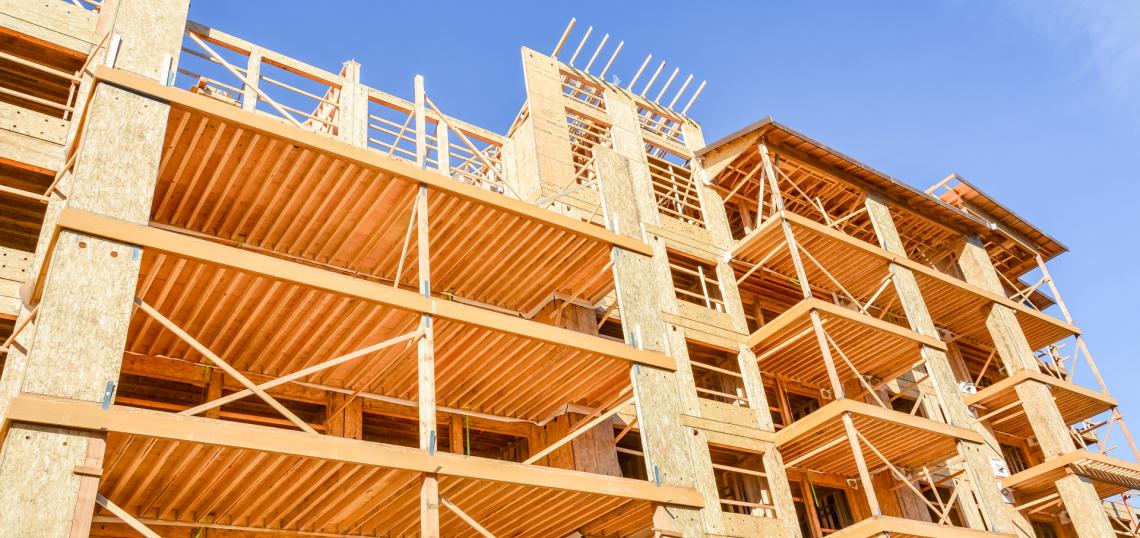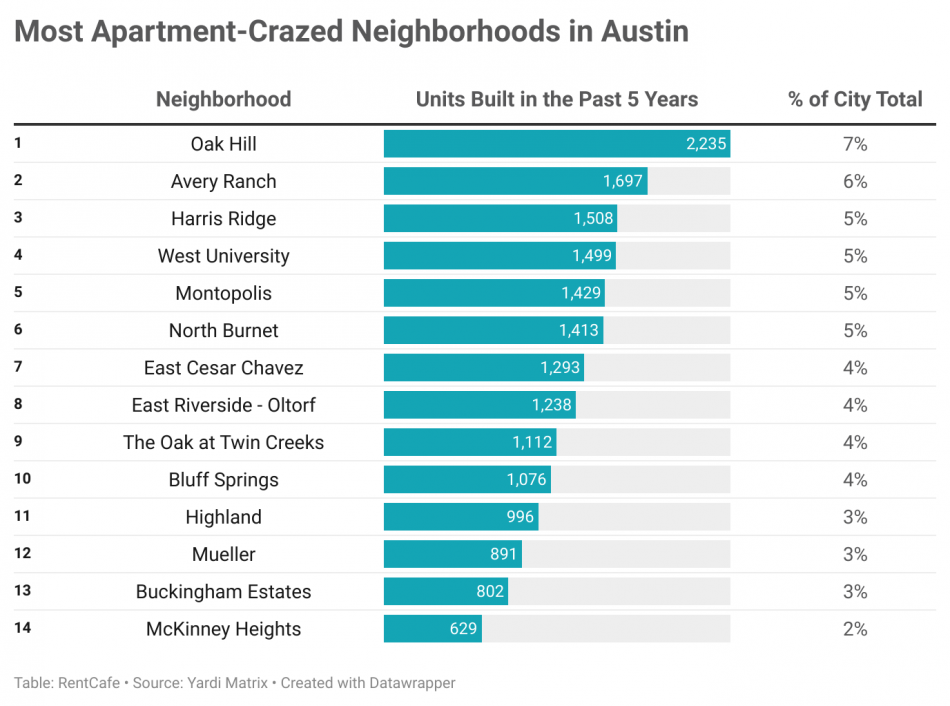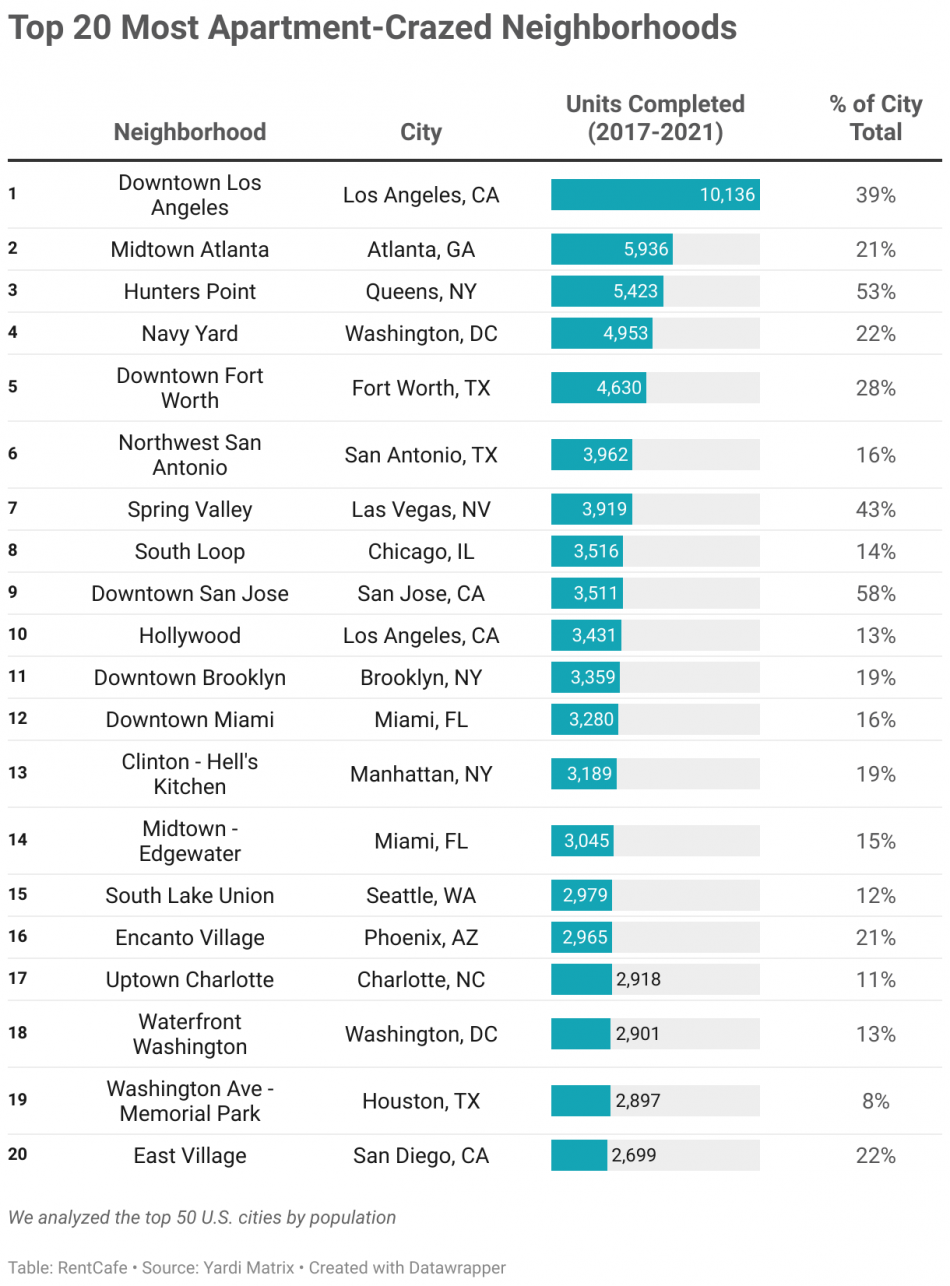If you live in Austin, you might be under the impression that new building construction—especially new apartment construction—is on a trajectory that spirals ever upward, with no end or dropoff in sight. That is, after all, the lived reality of many Austin neighborhoods, central and far-flung alike, where residents navigate through detours and around construction zones on a daily basis.
The Austin apartment explosion of the past few years is part of a historic national boom, according to apartment search and data site RentCafe, and it’s certainly the case that rapidly growing cities demand and need more housing for all their residents. But the numbers underlying the building flurry in some ways contradict common perceptions of the situation.
For one thing, the pace of new multifamily construction in Austin might have slowed somewhat, if only temporarily (what with the COVID-19 pandemic and all). Earlier this year, RentCafe reported that, while local apartment construction rose in 2020, it was expected to fall in 2021.
Moreover, most of the new apartments built in Austin in the past five years are not Downtown, according to a new RentCafe study. That makes the city somewhat of an outlier—at least among other US cities. Downtown Austin doesn’t even make the top 20 of the site’s “Most Apartment-Crazed Neighborhoods” list (yes, that’s the name of it), which is dominated by downtowns in major cities across the country and has Downtown Los Angeles in its top slot.
Using apartment data provided by development and asset management site Yardi Matrix, the study analyzed construction data for the 50 largest US cities, concluding that “the 20 most active neighborhoods for new apartments were mostly hyper-urban, centrally located areas, that are highly sought after by Millennial and Gen Z renters.”
While “in many cases, downtown areas are the frontrunners of new apartment construction in the past 5 years,” RentCafe noted that “Austin apartment development was quite spread out compared to other major cities, as the top 10 booming neighborhoods here account for 47 percent of the construction in the city.”
That brings us to Oak Hill—a neighborhood that, while full of people and traffic congestion, is certainly not what anyone would consider part of Downtown Austin. The southwest Austin ranch-community-turned-suburb is the longtime home of the Austin Community College Pinnacle campus and is currently the site of a contested highway expansion that includes the heavily traveled junction of Highway 290 and State Highway 71 (the “Y in Oak Hill”).
Whether it’s “highly sought after by Millennial and Gen Z renters,” as RentCafe characterizes “apartment-crazed” areas in other parts of the country, is open to question. But Oak Hill has seen the development of the most apartments in the city since 2017, according to the study, accounting for 7 percent of the city's apartment boom with more than 2,200 new units built in the last 5 years.
Avery Ranch was the second top choice for Austin area apartment builders, with almost 1,700 new apartments, or 6 percent of the units built in the city, since 2017. West University and East Cesar Chavez, the most Downtown-proximate neighborhoods in the study, were in fourth and seventh place, respectively.








